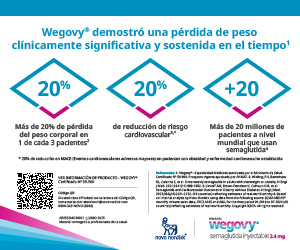Smoking cessation
DOI:
https://doi.org/10.47196/diab.v57i3Sup.688Keywords:
smoking cessation, benefitsAbstract
Smoking is the leading preventable cause of death in the world. There are 1 billion smokers in the world. Tobacco causes 8 million deaths per year (44,000 in Argentina). One in five humans dies from tobacco. Half of smokers die from tobacco. The average life expectancy of smokers is decreased by 13 years. The main causes of death related to smoking are: atherosclerotic cardiovascular disease, chronic obstructive pulmonary disease and cancer. Argentina presents a prevalence of smoking of 22% in adults, with a decrease observed in the last two decades of more than 7 points.
With smoking cessation, a reduction in the risk of death in general, cardiovascular death, acute myocardial infarction, cerebrovascular accident and heart failure, a reduction in the risk of cancer and an attenuation of the slope of decline in lung function, among others, is achieved. other benefits. The benefits are observed at any age and with any consumption made. The earlier the abandonment, the greater the benefit. The reduction in the risk of cardiac events is observed shortly after quitting and increases until approximately 15 years after quitting, at which time the risk of the ex-smoker equals the risk of the never smoker.
An effective and validated approach strategy is that of the 5 A's: Ask, Advice, Assess, Assist, Arrange. Both behavioral counseling and pharmacotherapy have been shown to be more effective than placebo or no therapy in achieving smoking cessation at one year; and together they are superior to either one alone. The first-line drugs that have shown effectiveness and safety in achieving this are: Nicotinic Replacement Therapy (Patches, Gum, Lozenges, Nasal Spray, Inhaler), Bupropion (atypical antidepressant), Varenicline (partial agonist of nicotinic receptors). The latter has been withdrawn from sales for two years due to contamination of the presentation. The electronic cigarette with nicotine has been shown to be effective and safe in the short term, but there are doubts about these two outcomes in the long term.
References
I. US Preventive Services Task Force; Krist AH, Davidson KW, Mangione CM, Barry MJ, Cabana M, Caughey AB, Donahue K, Doubeni CA, et al. Interventions for tobacco smoking cessation in adults, including pregnant persons. US Preventive Services Task Force Recommendation Statement. JAMA 2021 Jan 19;325(3):265-279. doi: 10.1001/jama.2020.25019.
II. Smoking cessation: a report of the Surgeon General, United States Public Health Service Office of the Surgeon General, National Center for Chronic Disease Prevention and Health Promotion (US) Office on Smoking and Health. (Eds), US Department of Health and Human Services, Washington (DC) 2020.
III. Stead LF, Koilpillai P, Fanshawe TR, Lancaster T. Combined pharmacotherapy and behavioural interventions for smoking cessation. Cochrane Database Syst Rev 2016 Mar 24;3(3):CD008286. doi: 10.1002/14651858.CD008286.pub3.
IV. Hartmann-Boyce J, Lindson N, Butler AR, McRobbie H, Bullen C, Begh R, Theodoulou A, Notley C, Rigotti NA, Turner T, Fanshawe TR, Hajek P. Electronic cigarettes for smoking cessation. Cochrane Database of Systematic Reviews 2022; Issue 11. Art. No.: CD010216. doi: 10.1002/14651858.CD010216.pub7.
Downloads
Published
Issue
Section
License
Copyright (c) 2023 on behalf of the authors. Reproduction rights: Argentine Diabetes Society

This work is licensed under a Creative Commons Attribution-NonCommercial-NoDerivatives 4.0 International License.
Dirección Nacional de Derecho de Autor, Exp. N° 5.333.129. Instituto Nacional de la Propiedad Industrial, Marca «Revista de la Sociedad Argentina de Diabetes - Asociación Civil» N° de concesión 2.605.405 y N° de disposición 1.404/13.
La Revista de la SAD está licenciada bajo Licencia Creative Commons Atribución – No Comercial – Sin Obra Derivada 4.0 Internacional.
Por otra parte, la Revista SAD permite que los autores mantengan los derechos de autor sin restricciones.




























